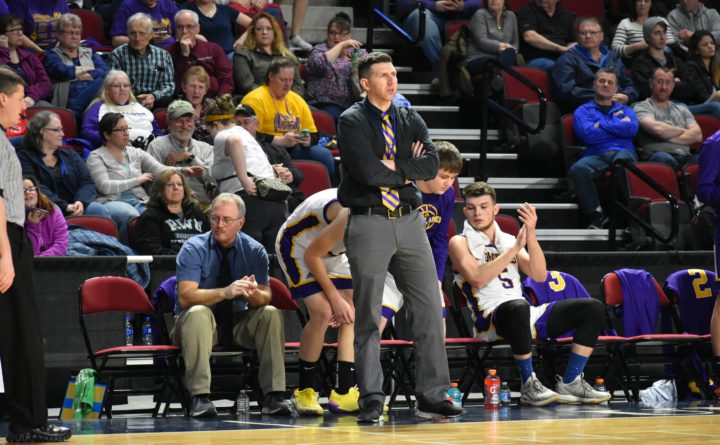
Changing demographics and a shrinking high school population have challenged organizers within the Maine Principals’ Association.
The MPA uses school enrollments to determine sports classification in an effort to maintain competitive balance for a membership that ranges from 18 students at North Haven School to 1,476 at Thornton Academy in Saco.
It has reached the point where two different reclassification proposals await consideration by the MPA membership at Thursday’s spring meeting.
That’s a first for Dick Durost, who is retiring this summer after serving as MPA executive director since 2001.
The MPA has tried to address the same issue in football, where the gap in enrollment among the largest and smallest schools in Class A has reached 500 students or more. A proposal that will create a Class A division with only the eight largest schools also is up for a vote on Thursday.
For basketball, the proposals differ by only 10 students in separating the two smallest-school divisions, Classes C and D. But the issue is more than the fine line between the dueling recommendations.
In Class D North, Schenck of East Millinocket and Washburn led with 118 students each followed by Machias (115), and Deer Isle-Stonington and Woodland (112 each). Greater Houlton Christian Academy (23), Easton (66) and Jonesport-Beals (67) were the smallest to field boys varsity teams.
Another issue involves regional dynamics and the preponderance of Class D schools both Down East and in The County.
The CAHS boys and girls both entered the Class C North tourney seeded first but were upset in their quarterfinals.
“There’s a whole world of difference between a strong D team and a strong C, it’s just night and day,” said John Rogers, athletic administrator at Woodland High School, whose program has spent six of the past 10 years in Class D and four in Class C.
“I don’t think there’s an easy answer to this,” Durost said. “Somebody’s got to be the five largest schools in a class, and somebody’s got to be the five smallest schools, and if you’re a school that seems to be right on the bubble year after year it probably does feel like you’re being jerked up and down every one or two classification cycles.”
There are varying enrollment cutoffs for different sports, based in great part on the number of schools fielding teams in each. This year, the basketball cutoff between Classes C and D was 129 students, compared to 174 for soccer, baseball and softball.
“We’ve got three athletic seasons, and in the fall and in the spring we compete against schools with 150 and 165 [in Class D] and there’s no issues,” Rogers said. “We’re just trying to get the numbers compatible with what we do during the other two seasons.”
After initially considering a proposal that would have shifted the classifications of 33 (approximately 20 percent) of the state’s basketball programs, the MPA basketball committee recommended keeping the enrollment cutoff between Classes C and D at 129 students for the next two-year cycle.
That meant only Woodland, whose enrollment increased from 112 to 130 during the last two years, would be elevated from D North to C North under the plan.
That panel suggested a cutoff of 139 students, which would have accommodated all five of the appealing schools, and referred the issue back to the classification and basketball committees.
“I would suspect, and I don’t want to speak for the management committee, that their suggesting 139 was simply a way of making sure everyone had the opportunity to speak at the spring meeting when the classification report is given,” Durost said. “They wanted the membership to understand the pros and cons for those schools with an enrollment between 129 and 139.”
“I can understand the perspective of all of those schools in [Class] D that are 129 or smaller,” Durost said. “To them, those schools between 129 and 139 are larger, and many have been very successful in recent years.
“By the same token, if I was representing one of those five schools between 130 and 139, I look at having to try to compete against [Class] C schools that might have as many as 300 kids. There’s an argument on both sides.”
“We left it with the idea that we would look at all of basketball next offseason and consider other alternatives, including whether we would go back to four classes or whether we might go to six classes or whatever else might come up,” Dow said.
In the meantime, the full MPA membership will consider the dual proposals before making a final decision for basketball’s near term.
“A difference of one person forces us to play against schools with upward of 300 kids, and we just can’t compete,” Rogers said.
This article originally appeared on www.bangordailynews.com.






